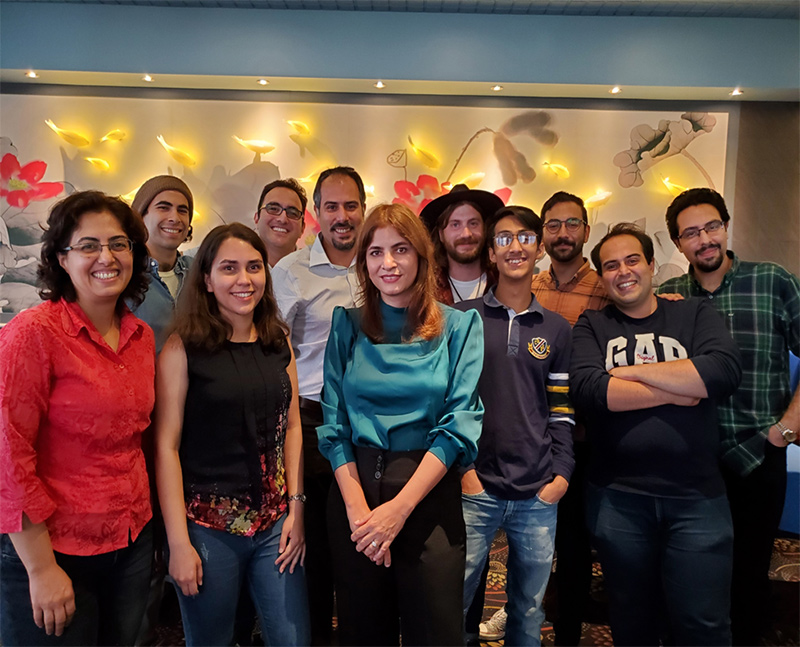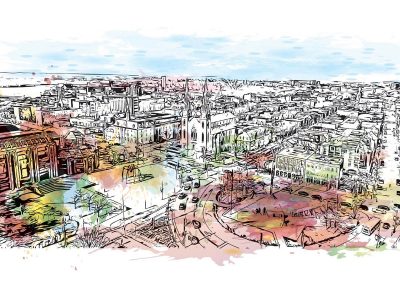By Ahmed Minhas
Space exploration is entering a new phase of rapid growth with new missions, industries and technologies pushing the boundaries. At the forefront of this expansion are autonomous systems and robotics — critical tools for operating in environments too remote or hostile for crewed missions.
At Carleton University’s Autonomous Space Robotics and Mechatronics Laboratory (ASRoM Lab), researchers are developing intelligent robotic systems in collaboration with leading space agencies.

Carleton University Mechanical and Aerospace Engineering associate professor Robin Chhabra
Led by Robin Chhabra, Canada Research Chair in Autonomous Space Robotics and Mechatronics, the lab focuses on guidance, navigation and control systems that allow robots to operate cooperatively in space.
“We’re building the frameworks, algorithms and artificial intelligence that allow these systems to adapt, cooperate and make independent decisions,” says Chhabra. “We’re looking at a diverse robotic ecosystem on other planets; robots that can make local decisions, start their next steps of exploration and collaborate with each other without human intervention.”
From Lunar Exploration to Orbital Clean-up
One of the lab’s earlier engagements, now concluded, supported a proposal led by MDA Space for the Canadian Space Agency’s lunar rover program, part of NASA’s Artemis mission. The lab contributed technical solutions to challenges that future lunar missions will face, including simulating the effects of lunar dust on hardware systems and proposing ways to protect sensitive equipment.
The team also explored a self-burrowing tool to collect subsurface samples and helped design localization methods to allow rovers to navigate the moon’s barren terrain.

Carleton University’s Autonomous Space Robotics and Mechatronics Laboratory (ASRoM Lab) team
“The moon is a featureless environment,” Chhabra explains.
“You can easily get lost over there, so methods to help with localization of a team of rovers are critical.”
Closer to home, the lab is supporting the European Space Agency’s e.Deorbit initiative, part of a global effort to address the growing problem of orbital debris. Today, there are more than 36,000 objects larger than 10 centimetres in space.
With thousands of telecommunication satellites (e.g., Starlink) planned for Earth’s orbit (in addition to what’s out there), debris is estimated to double in 50 years, impacting existing and future orbital infrastructure and missions into space.
The ASRoM Lab tackles this issue from two angles. First, researchers are designing large-scale scheduling systems that could dispatch fleets of robotic service satellites (robotic mechanics) to perform repairs or deorbit debris. Second, they’re focusing on the close-proximity robotics (e.g., robotic arms) needed to safely approach, latch onto and manipulate fast-moving objects in space.
“Our focus is on achieving reliable, safe motion around debris; tracking them, locking on, grasping and executing operations without failure,” explains Chhabra.
To do this, the lab is developing evolutionary algorithms for long-term mission planning and real-time motion strategies to guide robotic arms during high-stakes, short-window operations.
Next-generation Robots for Extreme Exploration
In partnership with NASA, the lab is developing entirely new robotic systems to go where traditional rovers can’t: steep valleys, rocky formations and extreme environments on other planets.
“We’re building what we call shape-morphing soft robotic systems,” says Chhabra.
“Their purpose is to navigate inaccessible environments by deforming and shaping themselves.”
Among the prototypes are tiny shell-like robots that crawl over rugged terrain to deliver sensors or instruments. Other designs include worm-shaped pneumatic robots composed of flexible segments, allowing them to bend, twist and drill beneath planetary surfaces.
Chhabra’s team is also developing multi-legged robots that can continue their mission even after taking damage. Onboard monitoring tools allow them to detect which leg is impaired and adjust their movement in real-time.
“We’ve developed methodologies to detect damage and ensure the robot can stand up autonomously and continue moving,” says Chhabra. “That kind of resilience is essential in remote environments where rescue isn’t an option.”
Building the Future of Space Robotics at Carleton
The future of autonomous robots that can think for themselves and adapt to varied environments and missions is being created here at Carleton.
Working with cognitive science and neuroscience experts, the lab is studying how human learning and memory might inspire next-generation artificial general intelligence (AGI).
As Chhabra explains, “AGI is about moving from specific tasks to human-like adaptability. A robot that can live in an environment, learn from it and perform a wide range of functions — not just one.”
As Carleton expands its expertise in this field, the university’s new Mechatronics Engineering program offers students hands-on training in robotics, autonomous systems and AI. These students may someday contribute to the kind of cutting-edge research happening inside the ASRoM Lab — advancing Canada’s leadership in robotics and shaping the future of space exploration.
Monday, July 14, 2025 in Engineering, Faculty of Engineering and Design, Research
Share: Twitter, Facebook



